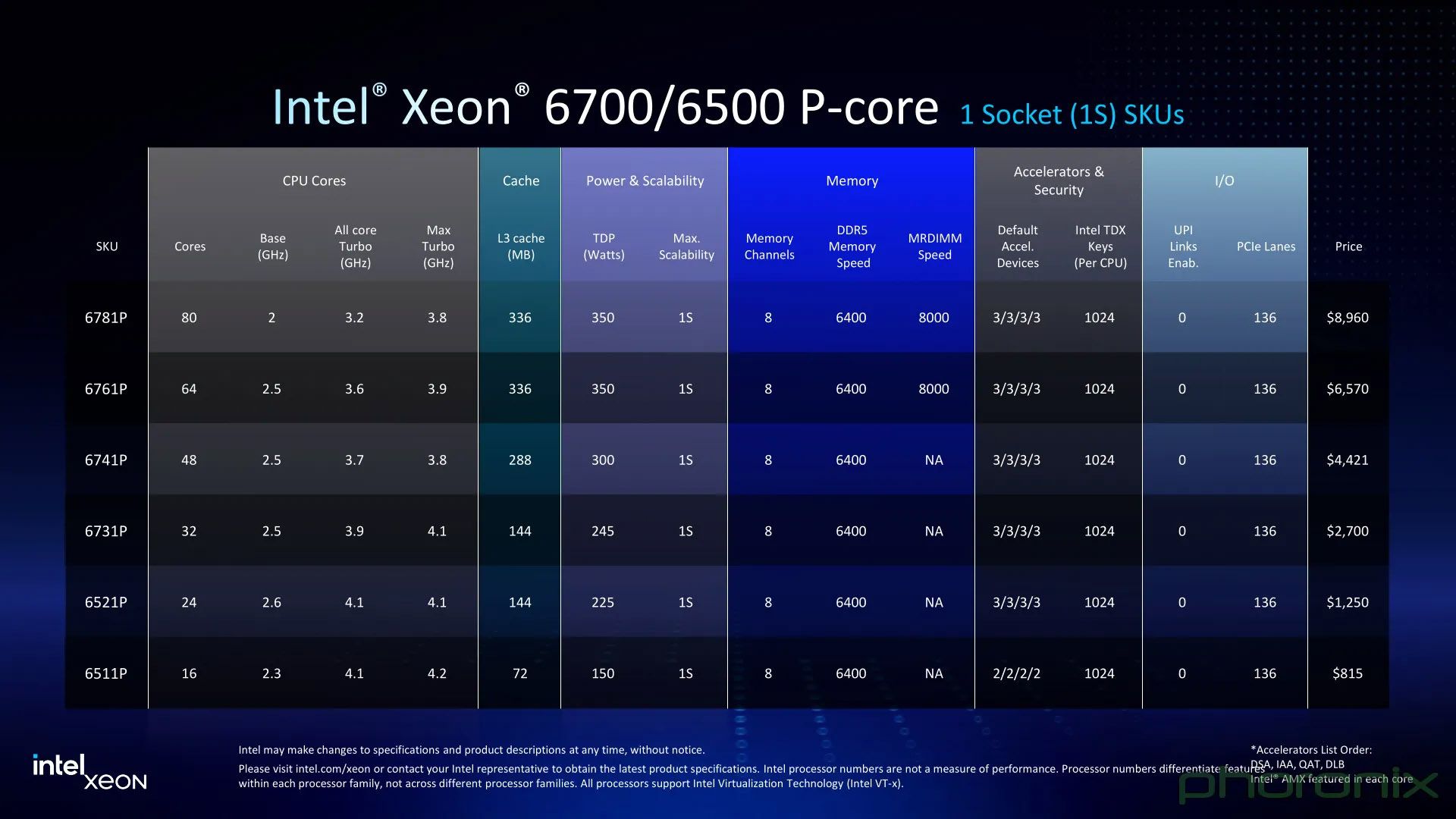Core counts for consumer CPUs have been increasing in recent years, but have you looked at what’s happening on the workstation/server side? Intel has just released a CPU with a whopping 86 cores.
Intel has officially expanded its Xeon 6 processor family, introducing the new Xeon 6500P and 6700P series. These processors join the previously launched Intel Xeon 6900P “Granite Rapids” series, announced last September, and are basically meant to scale down to lower-end servers that don’t require as much computing power or scale up to servers that require several of these chips. Don’t get us wrong—these are still some crazy chips. The newly launched Xeon 6500P and 6700P processors offer configurations scaling up to 86 cores per socket. That’s a massive step up from the 24 cores we have on the high-end Intel Core Ultra 9 285K, and makes the processor uniquely suited for a lot of compute applications where multi-core performance is extremely high on the list of priorities.
These are Xeon chips, so this isn’t just something you can throw into your regular desktop computer. They require a special socket as well as special, business-focused motherboards. There is also technically nothing stopping you from building a PC with these business parts, but it might not be worth it—the hardware is extremely expensive and, for a home computer, you’re better served by desktop chips anyway. They are better suited for the things you use a PC at home for, and server chips are at a heavy disadvantage for things like gaming, where single-core performance matters just as much, if not more, than multi-core performance.
This is still pretty cool hardware, though. The 6500P and the 6700P both represent a step down from the top-tier Xeon 6980P, which boasts a maximum of 128 cores. That is an insane amount, but the 6500P and 6700P series have more differences and, notably, are designed to work on more systems. Unlike the 6900P series, the 6500P and 6700P processors, designated as “scalable” SKUs, are designed to support four and eight-socket platforms, allowing for greater system flexibility in data center environments. The range of chips itself is also available with as little as eight cores.
Besides the core count difference, the new processors also differ in how much memory they support, and the configurations in which that memory is supported. The 6500P and 6700P series support eight channels of DDR5 memory, whereas the 6900P series offers twelve channels. Both new and old processors continue to support MRDIMM memory technology. In terms of I/O capabilities, the 6500P and 6700P processors provide up to 88 lanes of PCI Express 5.0, slightly less than the 96 lanes available on the 6900P series. The number of UPI 2.0 links is also reduced, with four links on the new processors compared to six on the 6900P series.
Importantly, the new Granite Rapids processors maintain feature parity with the 6900P series regarding their instruction set architecture (ISA). This includes support for AVX-512, AMX (Advanced Matrix Extensions), and other relevant capabilities, so software/hardware compatibility should be identical across the whole Xeon 6 family. This tends to be something you take for granted on desktop PCs, but on server/workstation PCs, it’s an extremely important thing to take into account.
The only bad part about these, however, is the price. The higher-end Xeon 6787P which features 86 cores, a 3.8GHz turbo frequency, and has a 350-watt TDP, also has an insane list price of $10,400. The Xeon 6788P, which offers identical core count, clock, and power characteristics (the only difference being that it supports eight-socket motherboards) is priced at a bonkers $19,000. This is typical pricing for these kinds of chips, and it’s a big reason why they’re not even remotely considered for non-server applications. The lower-end Xeon 6507P with just eight cores also costs $765—not that crazy, but basically the same price as Intel’s Core Ultra 9.
And we should also remind you that these aren’t even the higher-end chips with 128 cores, which were announced earlier. So you know, there’s that.





